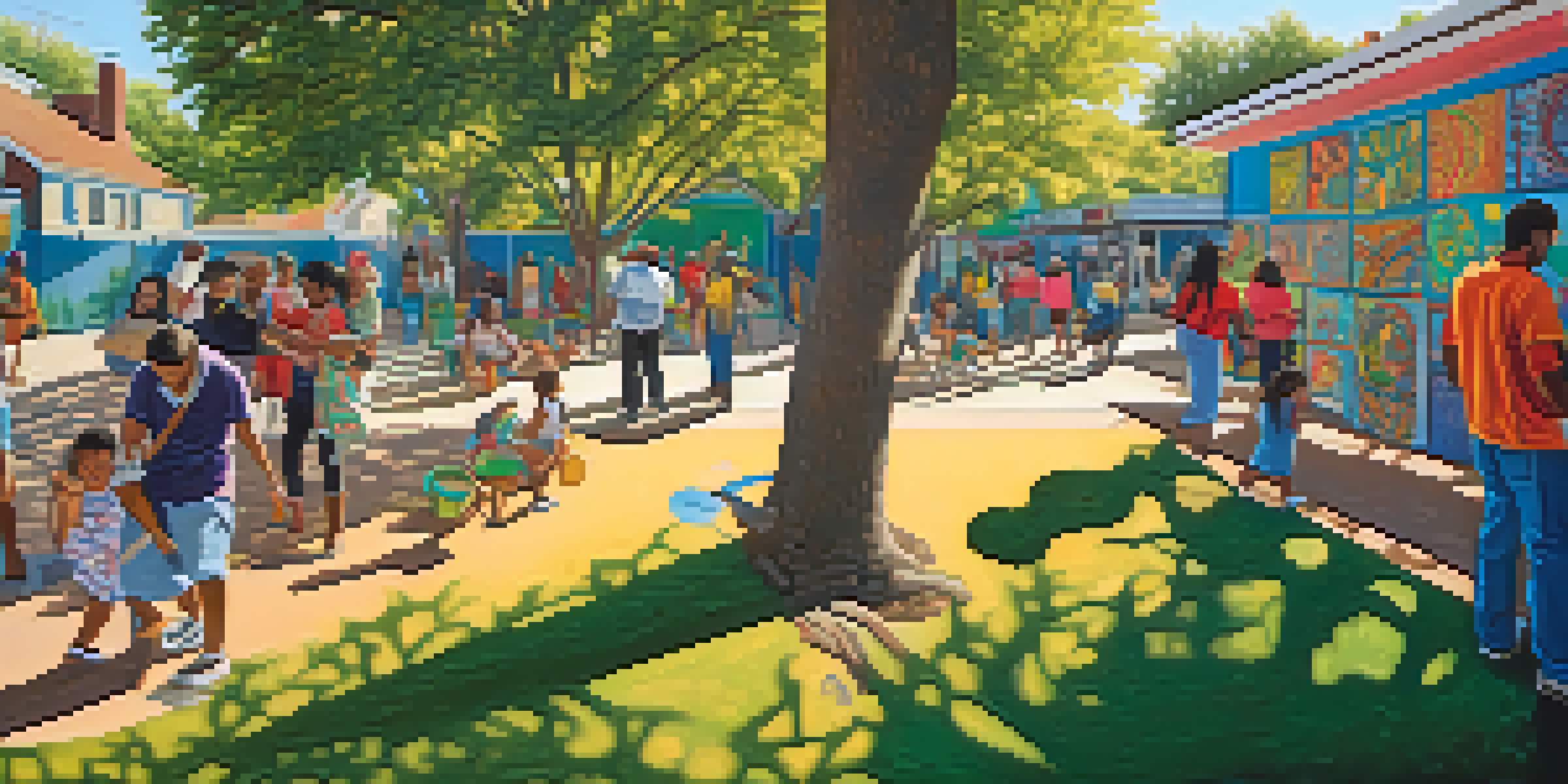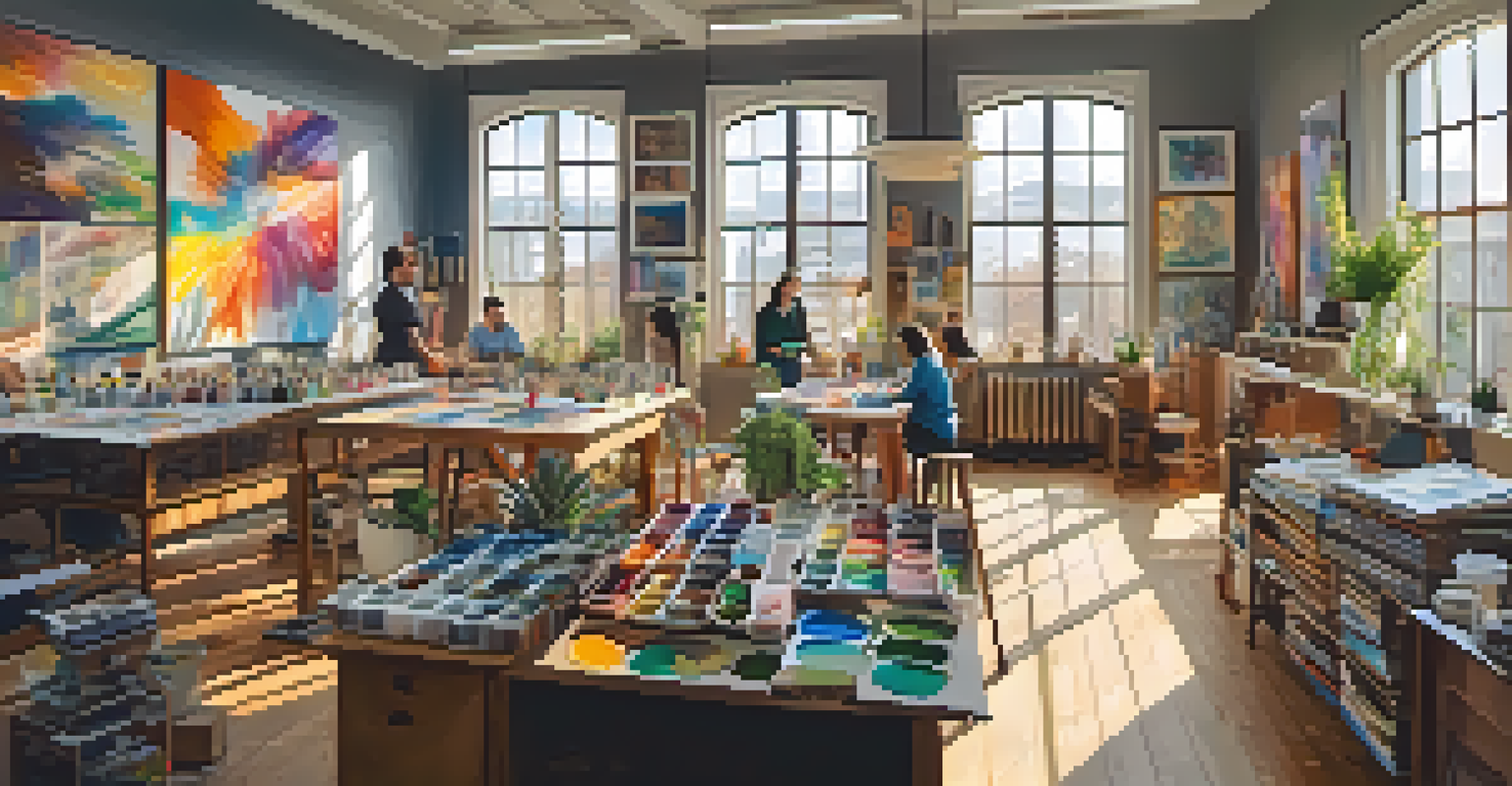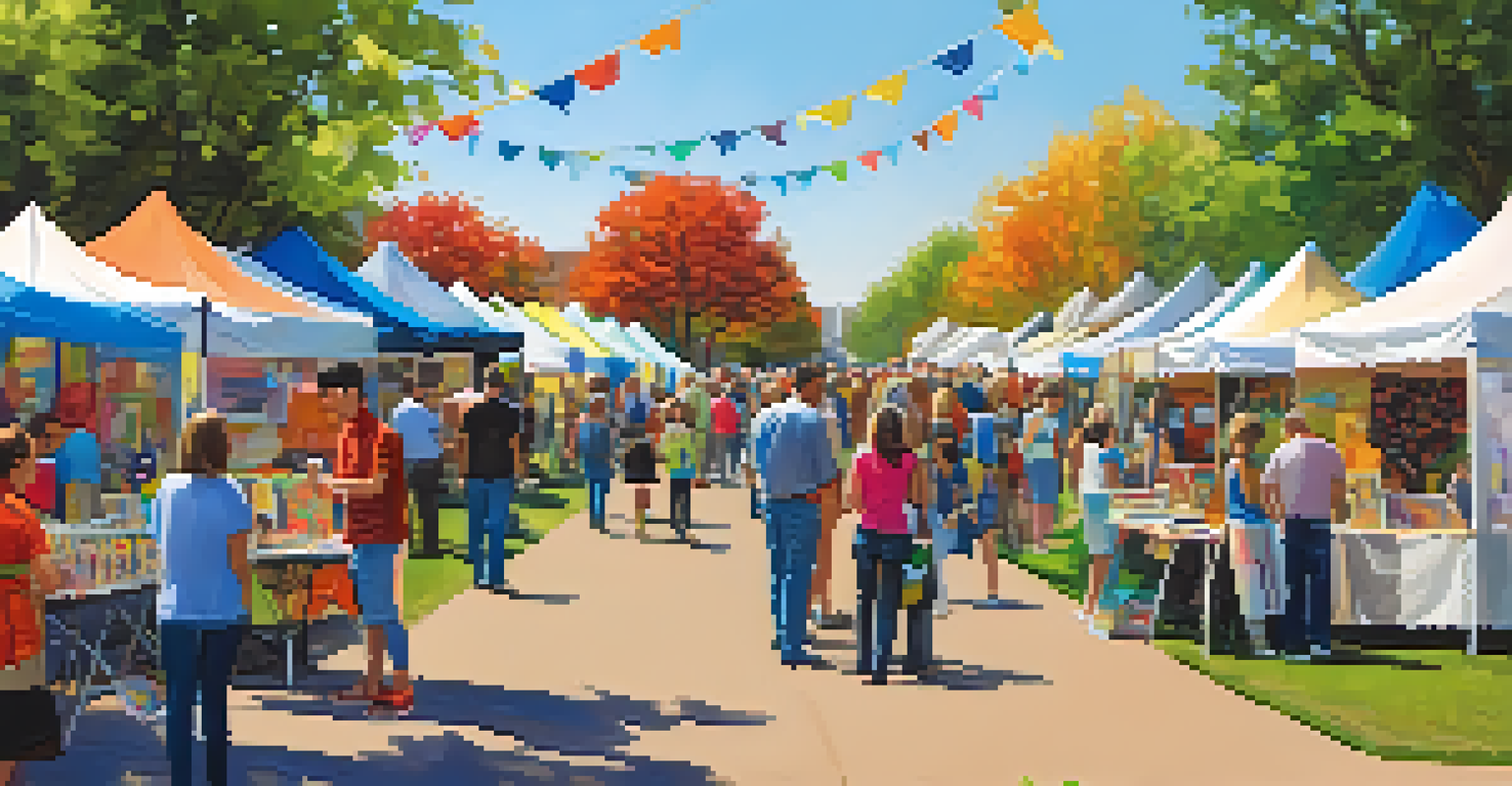The Impact of Art Collectives on Neighborhood Identity

Understanding Art Collectives and Their Purpose
Art collectives are groups of artists who come together to collaborate, share resources, and promote their work. They often focus on community engagement and social change, making art accessible to a wider audience. This collaborative spirit allows for diverse perspectives and ideas to flourish, enriching the cultural fabric of neighborhoods.
Art is not what you see, but what you make others see.
These collectives can take many forms—from informal gatherings of local artists to organized nonprofits. Each collective reflects the unique character and interests of its members, creating a vibrant tapestry of artistic expression. By pooling their talents and resources, artists are able to create impactful work that resonates with their community.
Ultimately, art collectives serve as a catalyst for creativity and innovation, often leading to projects that not only beautify spaces but also spark dialogue within the community. Their collective identity can become a powerful force in redefining a neighborhood's artistic landscape.
Art as a Tool for Community Engagement
Art collectives often engage with their neighborhoods through collaborative projects that invite participation from residents. This could be anything from mural paintings to community workshops that encourage local voices to be heard. Such initiatives help bridge gaps between artists and the community, fostering a sense of belonging and shared identity.

For example, a local mural project might involve residents in the design process, allowing them to express their stories and experiences visually. This not only beautifies the neighborhood but also creates a deeper emotional connection among its inhabitants. When people see their own stories reflected in public art, it creates pride and ownership over their surroundings.
Art Collectives Foster Community
Art collectives engage local residents through collaborative projects, bridging gaps between artists and the community.
Engaging the community in artistic endeavors also helps address social issues, as art can be a powerful medium for advocacy. Collectives often tackle themes such as gentrification, cultural preservation, and social justice, prompting conversations that matter to residents.
Art Collectives and Cultural Identity
Art collectives play a crucial role in preserving and promoting the cultural identity of neighborhoods. By highlighting local traditions, histories, and stories through their art, they serve as a living archive of the community’s heritage. This preservation is vital, especially in areas experiencing rapid change or gentrification.
Creativity takes courage.
For instance, an art collective may focus on indigenous or immigrant stories, bringing visibility to groups that might otherwise be overlooked. By creating spaces where these narratives can be shared, they help foster a more inclusive community identity. This not only honors the past but also enriches the present.
Moreover, as new residents move into a neighborhood, these collectives can serve as a bridge, helping to connect diverse cultures and perspectives. In doing so, they create a more harmonious coexistence and encourage mutual respect among different community members.
The Economic Impact of Art Collectives
Beyond cultural benefits, art collectives can significantly impact the local economy. By attracting visitors and encouraging foot traffic, their projects can help stimulate business for nearby shops and restaurants. This economic boost is often a byproduct of the artistic vibrancy that these collectives cultivate.
Art events, exhibitions, and festivals organized by collectives can draw crowds, creating opportunities for local vendors and artisans. This influx of people not only supports existing businesses but can also lead to new ventures opening in the area. A thriving creative scene can ultimately lead to job creation and increased property values.
Cultural Identity Preservation
These collectives highlight local traditions and stories, serving as living archives of community heritage.
However, it's important for collectives to balance growth with the needs of the existing community, ensuring that the economic benefits do not lead to displacement. By advocating for fair practices and inclusive policies, art collectives can help create sustainable economic development.
Challenges Faced by Art Collectives
While art collectives can have a profound impact on neighborhoods, they also face various challenges. Funding can be a major hurdle, as many collectives rely on grants, donations, and community support to sustain their activities. Without adequate financial backing, their ability to execute projects and reach wider audiences can be severely limited.
Additionally, navigating the dynamics of a community can be complex. Collectives must balance the interests of diverse stakeholders, including local residents, businesses, and governmental bodies. Misunderstandings or conflicts can arise if communication isn’t clear, potentially hindering collaborative efforts.
Lastly, as neighborhoods evolve, so too must the strategies of art collectives. They need to remain adaptable and responsive to changing demographics and community needs to stay relevant and impactful.
The Role of Technology in Art Collectives
In today's digital age, technology plays an increasingly vital role in the operations of art collectives. Social media platforms, for instance, provide a powerful tool for promoting events, showcasing artists, and building community engagement. This online presence can help broaden their reach beyond local borders, attracting attention from larger audiences.
Moreover, technology can facilitate collaboration among artists, allowing for virtual workshops and projects that connect individuals regardless of geographical constraints. This can lead to a rich exchange of ideas and techniques, further enhancing the collective's creative output.
Economic Boost from Art Initiatives
Art collectives can stimulate local economies by attracting visitors and supporting nearby businesses through their events.
However, it's essential for collectives to find a balance between online engagement and real-world interactions. While technology can amplify their voice, the core of their work often lies in direct community connection, which should not be overlooked.
The Future of Art Collectives in Neighborhoods
Looking ahead, the future of art collectives appears promising, especially as communities increasingly recognize the value of arts and culture. As cities evolve, there will likely be more opportunities for collaboration between collectives and local governments, leading to supportive policies and funding initiatives. This can enhance the sustainability and impact of these groups.
Additionally, as societal issues such as climate change and social justice take center stage, art collectives may play an essential role in advocacy through their artistic expressions. Their ability to communicate complex ideas and emotions can inspire action and awareness, making them vital players in driving community change.

Ultimately, as long as there are passionate artists and engaged communities, art collectives will continue to thrive. Their ongoing commitment to fostering creativity and connection will ensure that neighborhoods remain vibrant, culturally rich, and full of life.